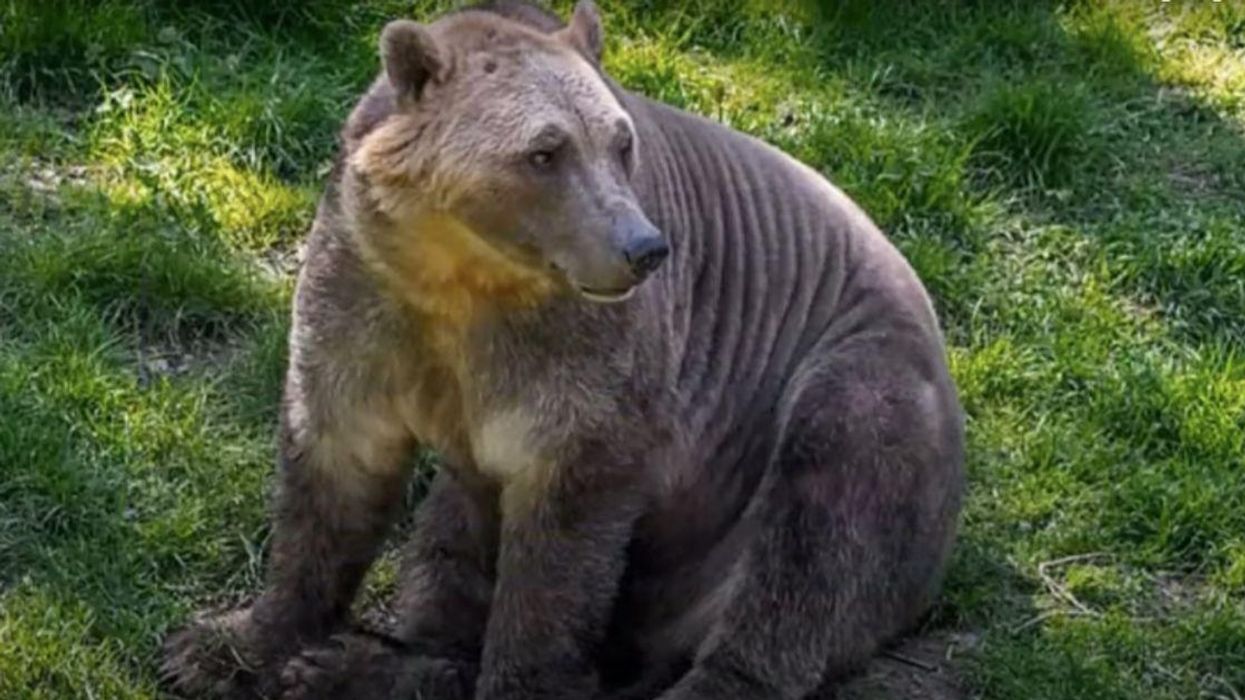
Most of what we hear about climate change are the challenges and potential disasters it will lead to if not mitigated. What we hear less about are the odd ways in which it’s already altering our world—sometimes in big, visible ways.
Since satellites began recording Arctic sea ice levels in 1979, scientists have expressed concern about the melting ice. Not only does the planet rely on Arctic ice for regulating weather patterns, but wildlife who call the Arctic their home rely on it for survival. Polar bears are considered vulnerable to the impact of climate change, and though their numbers are holding fairly steady overall, their movement patterns are changing as their icy habitat melts.
At the same time, the movement patterns of their southern cousins, grizzly bears, are also changing. Grizzlies can be found as far south as Wyoming and up north in Alaska. But as global temperatures rise, grizzlies have moved farther north, even going as far as the high Arctic.
With polar bears moving south to find land and grizzly bears moving north to find colder temps, the two are crossing paths. The birds and the bees habit applies to bears, and since polar bears and grizzly bears share similar DNA, they are able to breed.
And they have. Hence the hybrid species known as the “pizzly bear.” Also known as “grolar bear”. Also known as “polizzly.” (If we have to deal with a climate emergency, we can at least take a moment to appreciate getting the word polizzly out of it.)
In all seriousness, though, the emergence of the pizzly bear hybrid is a sign of climate change’s impact. The first pizzly bear was officially identified in the wild in 2006, though people who live in the Arctic had reported sightings of the strange-looking bear prior to that.
As the Associated Press reported at the time:
“Northern hunters, scientists and people with vivid imaginations have discussed the possibility for years.
But Roger Kuptana, an Inuvialuit guide from Sachs Harbour, North West Territories, was the first to suspect it had actually happened when he proposed that a strange-looking bear shot last month by an American sports hunter might be half polar bear, half grizzly.
Territorial officials seized the creature after noticing its white fur was scattered with brown patches and that it had the long claws and humped back of a grizzly. Now a DNA test has confirmed that it is indeed a hybrid — possibly the first documented in the wild.”
Since then, eight more pizzly bears have been identified in the wild, and as of 2017 researchers had determined that all of them sprung from one female polar bear who had mated with two different grizzly bears. However, it’s unknown how many of the hybrid bears may actually exist.
Prior to their discovery in the wild, researchers knew that polar bears and grizzly bears could mate because they had already done so at Osnabrück Zoo in Germany. That zoo had kept their polar bears and grizzly bears in the same enclosure, and in 2004, two pizzly bear cubs were born. (Unfortunately, one of them was shot and killed in 2017 after she escaped from her enclosure.)
Rare Hybrid Bear of Polar Bear and Grizzly Bear
www.youtube.com
Larissa DeSantis, a paleontologist and associate professor at Vanderbilt University in Tennessee, told The Independent that climate change “was definitely playing a role” bears cross-breeding. DeSantis studies the dietary habits of bears and how the climate crisis is impacting them.
“We need to study the effects of hybridization on these bears,” De Santis said. “Most of the time hybrids are not more vigorous than either of the two species, as grizzlies and brown bears have unique adaptations for their particular environments. However, there are a few examples where hybrids can be more vigorous and better able to adapt to a particular environment, particularly if the environment is deviating from what it once was. This requires further study and careful monitoring. Time will tell if these hybrids are better able to withstand a warming Arctic. These hybrids might be better suited for a broader range of food sources, like the grizzly bear, and in contrast to polar bears which are hyper-specialized.”
DeSantis says there is evidence that the pizzly bear hybrids are fertile, and there have been matings between a hybrid and a grizzly.
“This new type of bear is more resistant to climate change and better suited to warmer temperatures,” said DeSantis. So we may see more of these hybridizations, which would be kind of cool from a biological standpoint and a bad sign from an ecological standpoint. Hard to celebrate a new species when it’s a result of a crisis.
They sure are cute, though.
